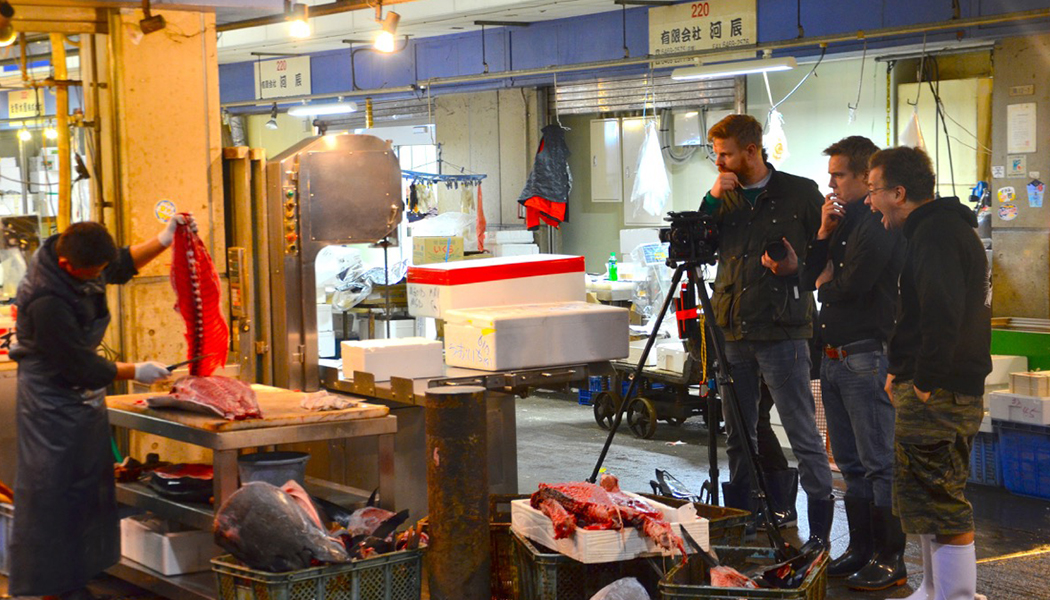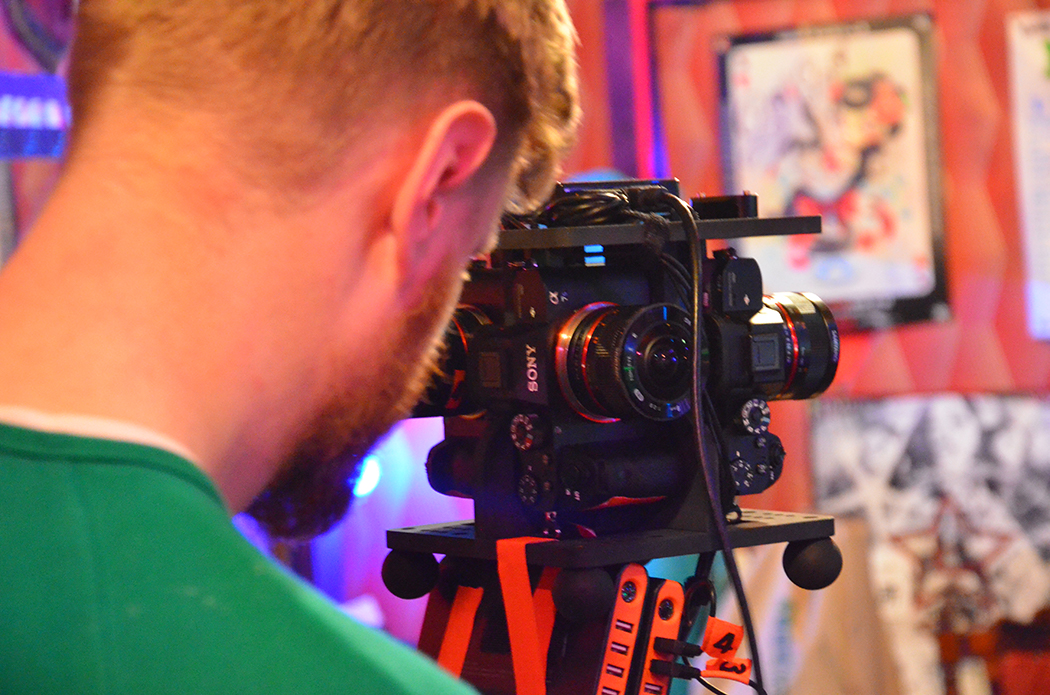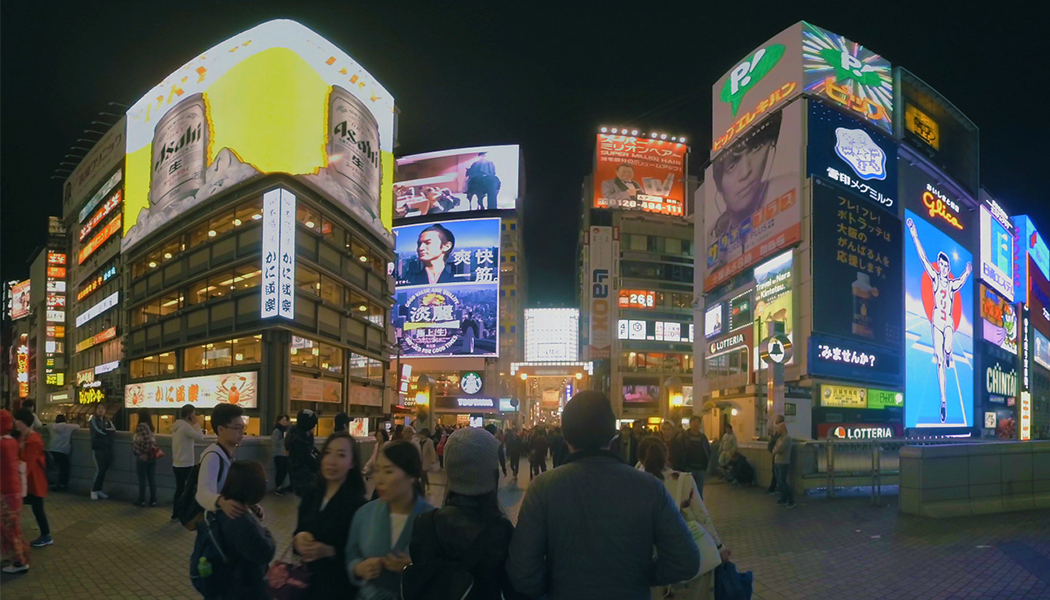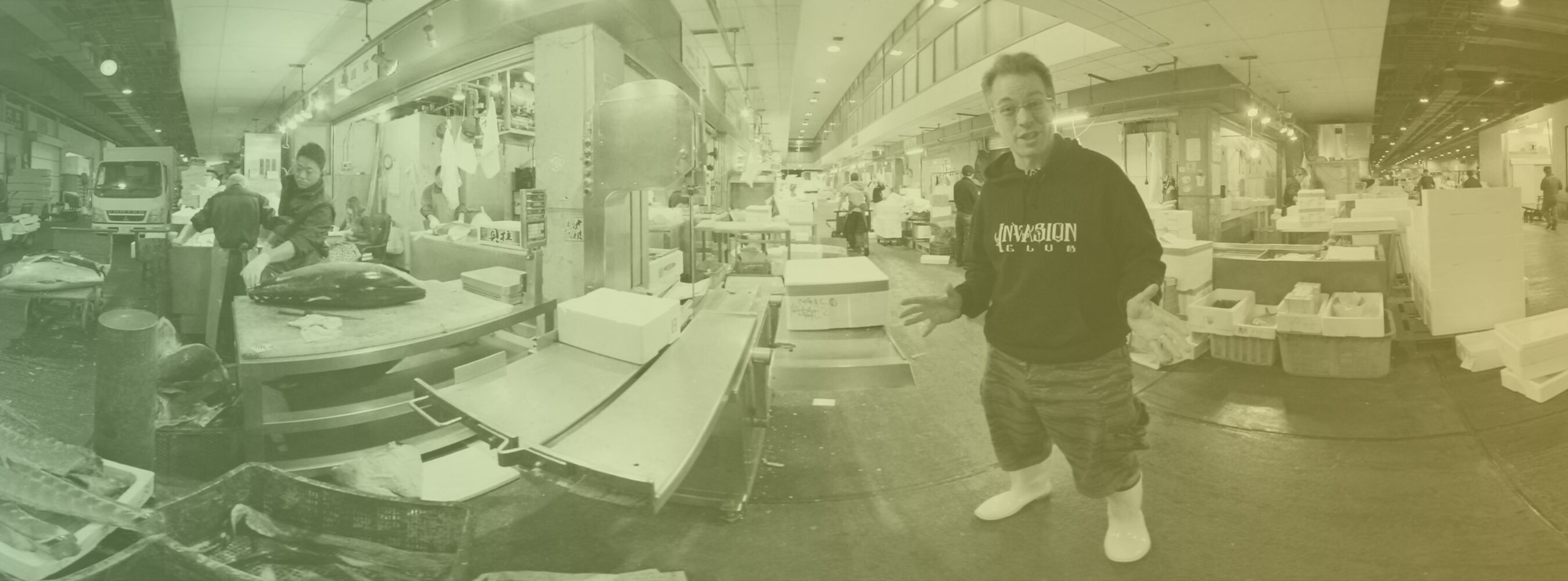Passport Osaka VR, a VR travel experience for The Economist Films
Discover the subculture of Osaka in this new VR travel experience for The Economist Films
The Challenge
Passport Osaka – VR is an extension of the Economist Films travel documentary series targeted at the intellectual, culturally curious and adventurous traveller. The series takes an intimate approach to exploring a city by using a real local personality as a tour guide, helping the viewer to understand the culture and destination even better.
This VR travel spin-off series mirrors a similar non-360° trip to Osaka by Economist Films but this time attempts to truly put the viewer in the eyes of long-term resident Hori Benny – or alongside him as a travel companion – as he takes us around the city he calls his home.

The key challenge was to take the viewer to a combination of hidden cultural locations, not typically accessible to westerners. This included visiting Japan’s traditional Sentō (communal baths), early morning bartering at a famous fish market, and exploring the eclectic nightlife and exceptional busy street life that makes Osaka such an exciting place to visit.
“As an experienced filmmaker, but a ‘newbie’ to VR, I was initially apprehensive about working with a team in an environment where I was out of my comfort zone. However, the gang at Visualise were fantastic: they understood the importance of ‘the story’ and we worked collaboratively to achieve an excellent character led VR experience.”
Hugo Ward, Director, Economist Films
The Solution
As much of the film was centred around indoor environments or needed to be shot at night, we required a camera system that would allow us to capture scenes with the highest possible clarity and quality in the various challenging situations.
The best 360° rig to fit the requirements was our custom-built, next generation cinematic VR rig based on the Sony A7S2 cameras and fondly known by the team as ‘Stanley’ (after Kubrick).
To ensure 3D audio was captured with the highest fidelity we used the VR ambisonic microphone from Sennheiser, which at the time was a working prototype.
Finally to pull the 360° scenes together with the audio, some carefully hidden lighting was deployed in certain scenes such as the themed bar in the Dōtonbori district.

One of the biggest challenges on this shoot was the time constraints, with only a limited number of shoot days and a packed schedule, director Hugo Ward delivered a highly researched script which brought to life his vision for the film meaning we could optimise our time and capture each scene efficiently.
In post we relied heavily on The Foundry’s new piece of software CARA VR to help us speed up the post-production process, which included compositing over patches and adding track blurs over sensitive regions in the Sentō bath scene.
One of the key aspects of this film is the use of our main protagonist, Hori Benny, as both narrator and person who takes us from scene to scene. It’s rare to find a real character so natural and good in front of the camera but Benny really allowed us to tell the story with ease.

The Results
Passport: Osaka is one of the first pieces of immersive content for The Economist’s VR app that was developed and built by Visualise.
The VR app is now available for Gear VR in the Oculus Store and both Apple iPhones and Android-based smartphones (Cardboard or similar adapter required).

